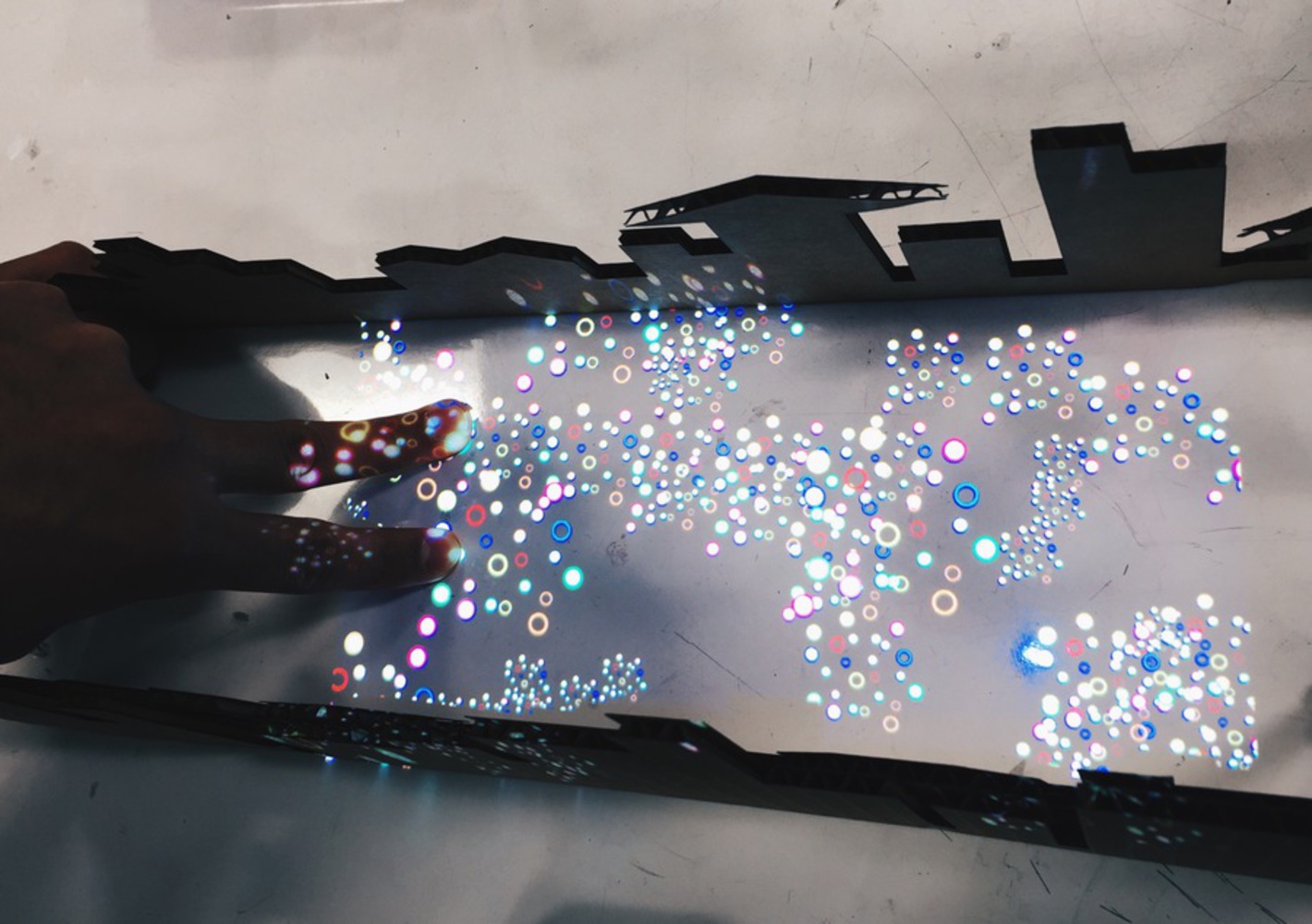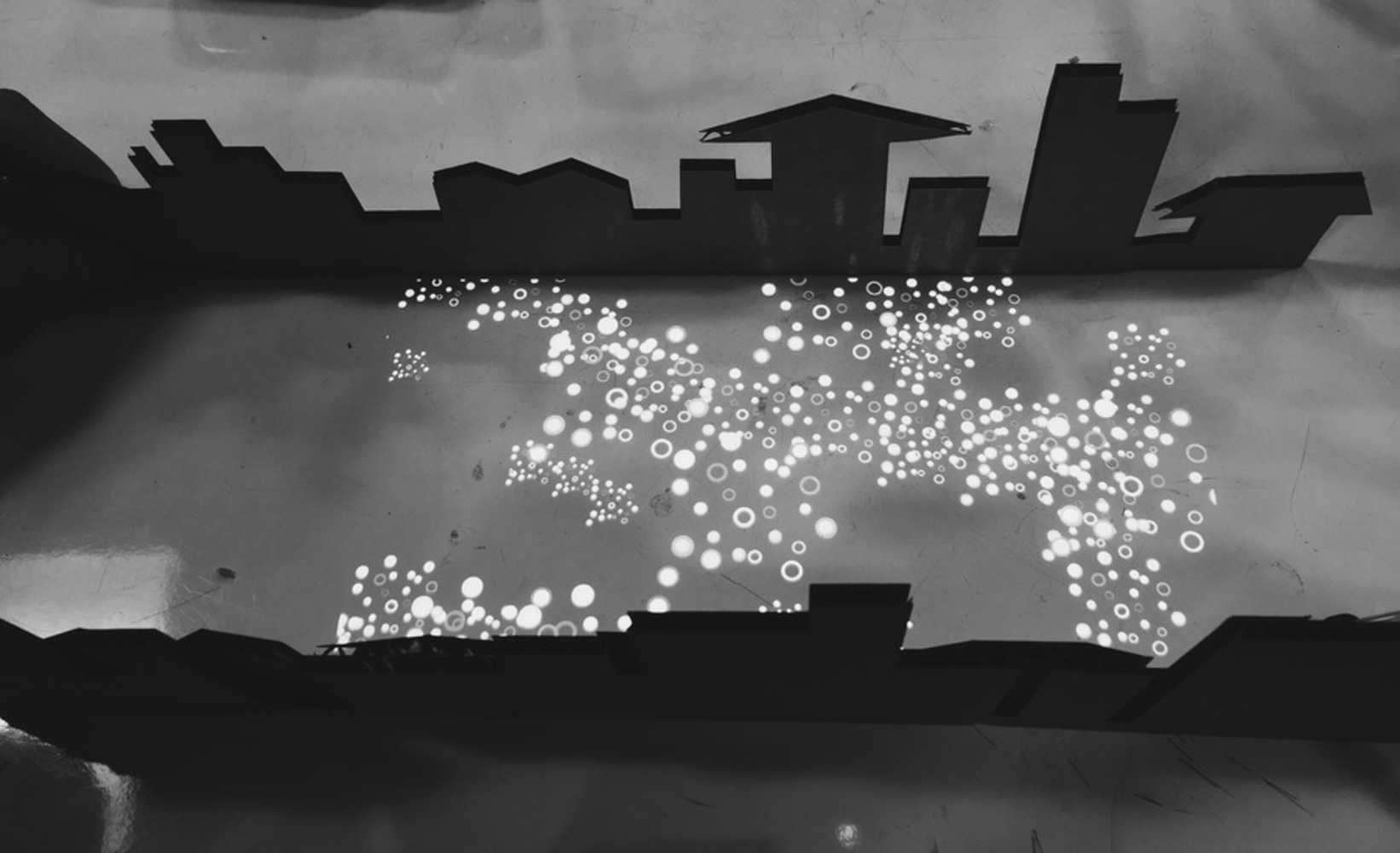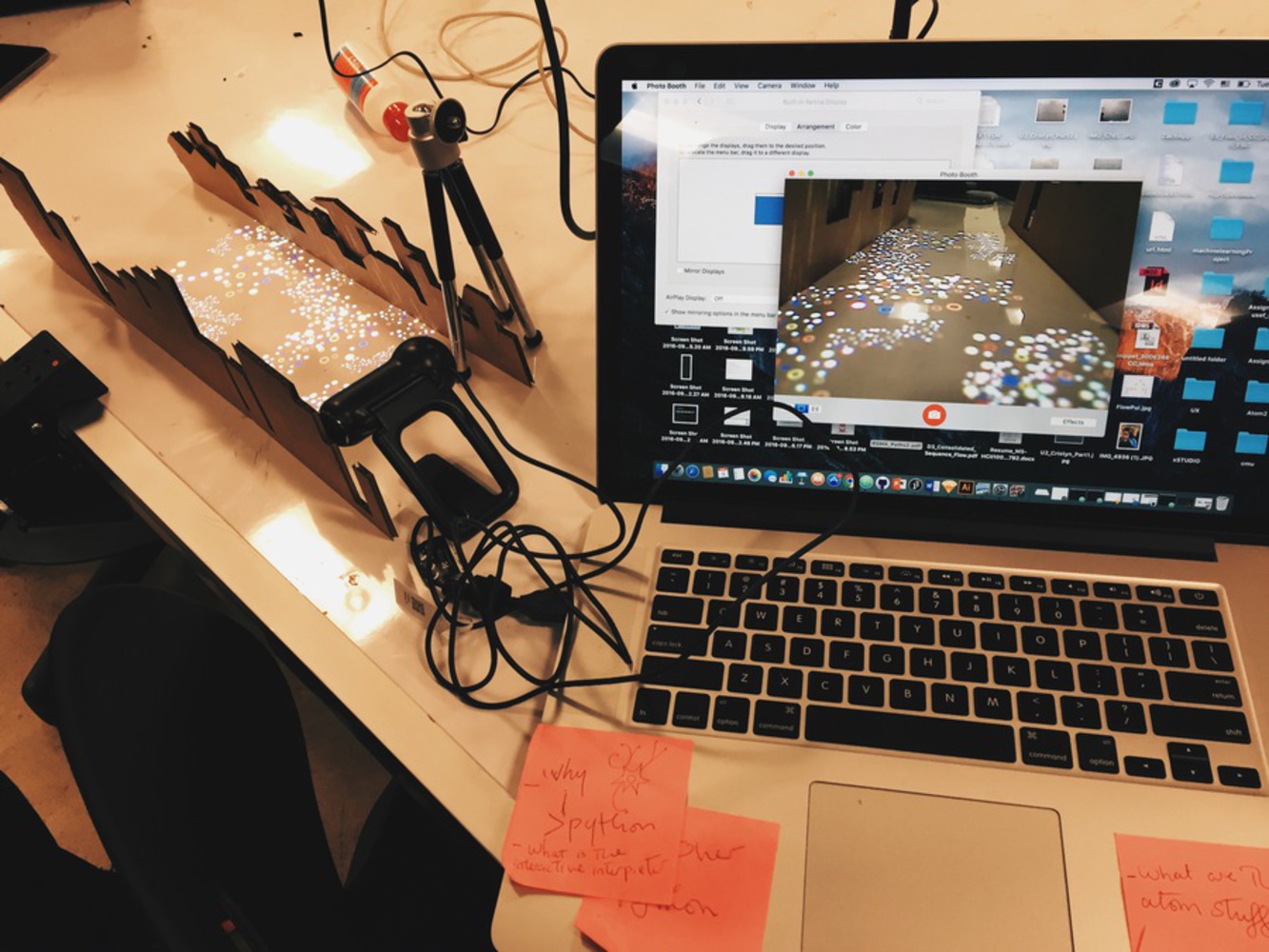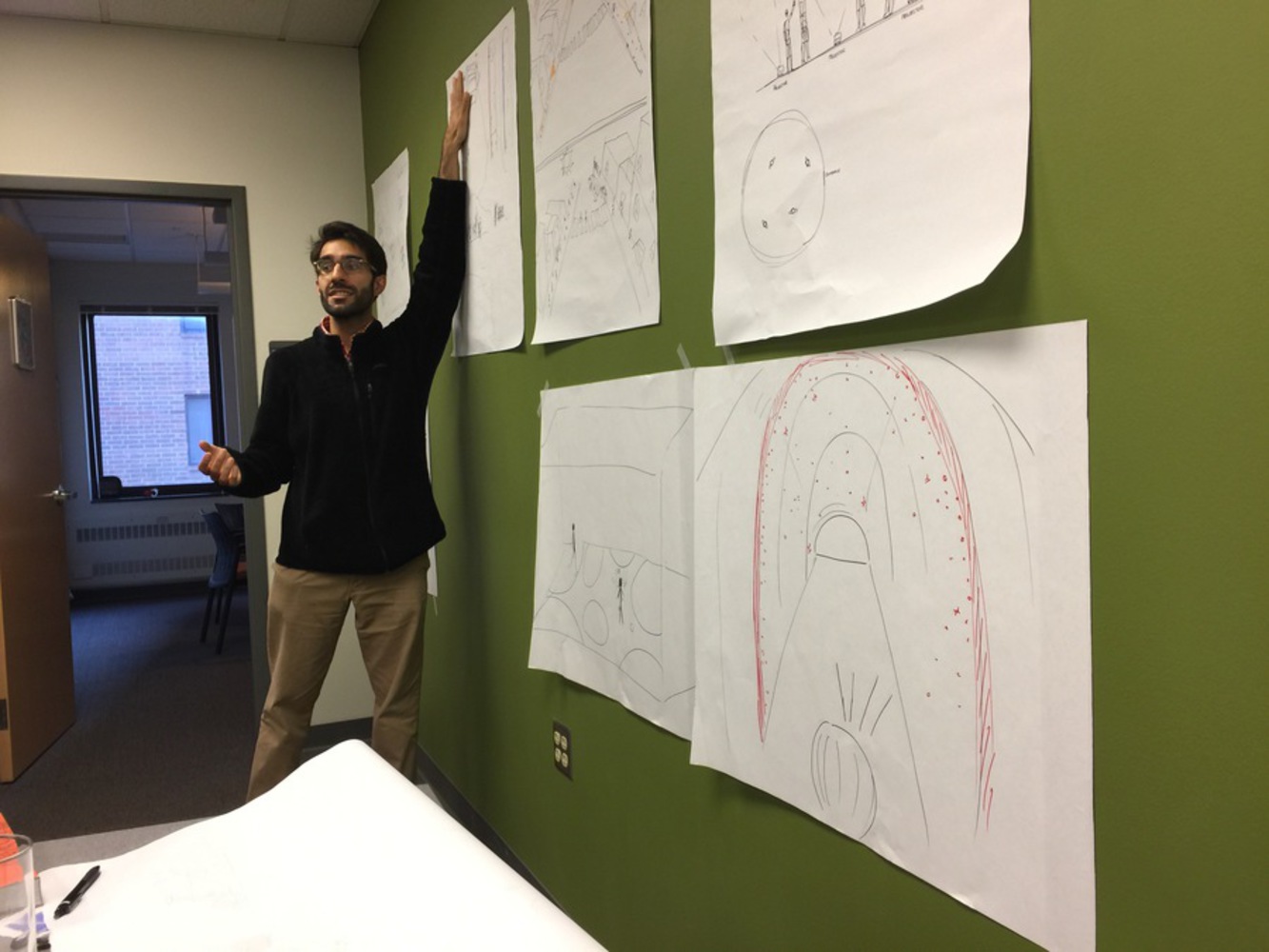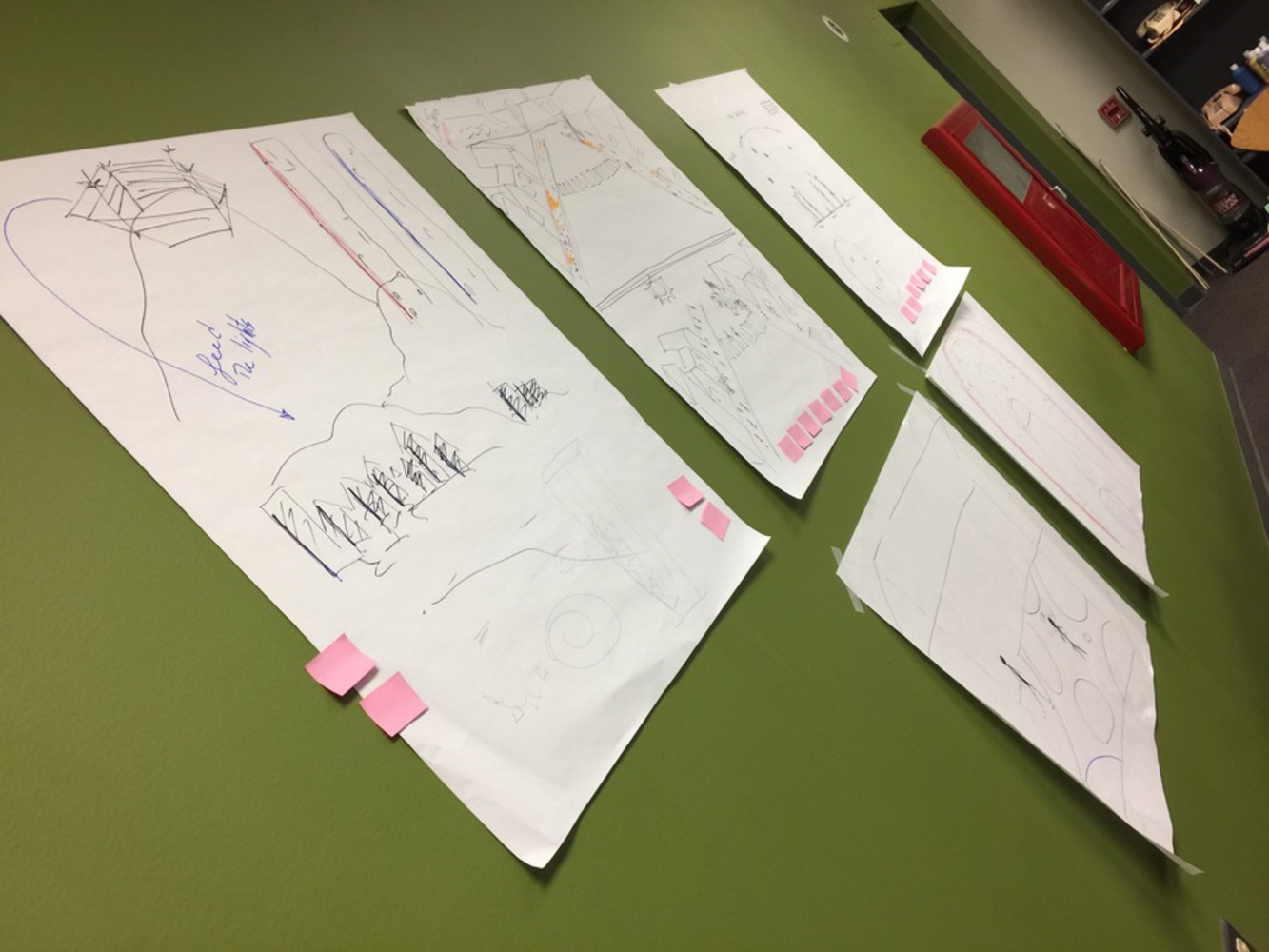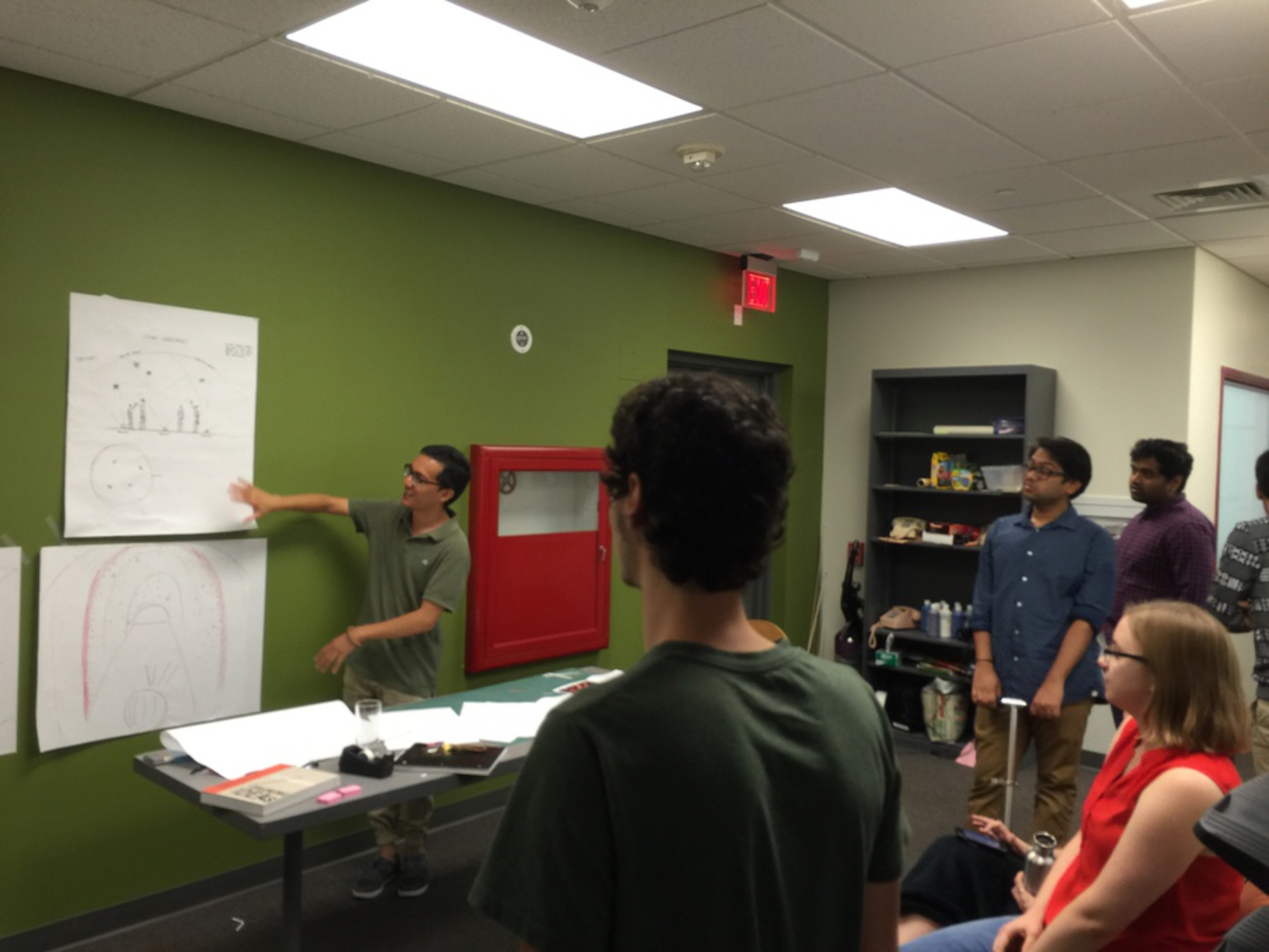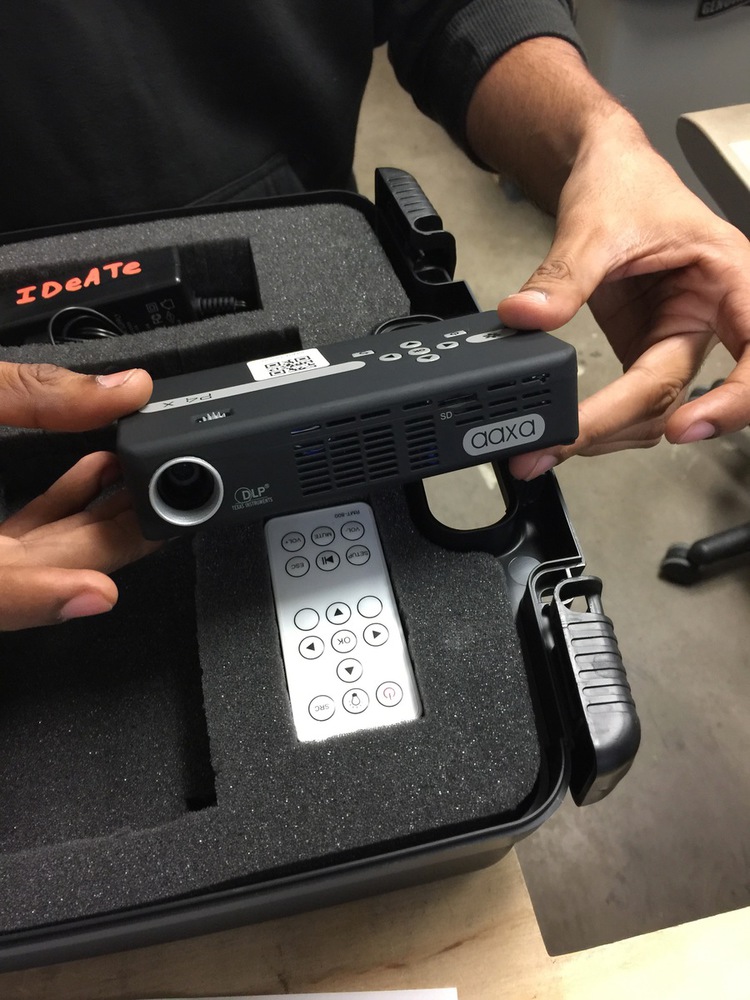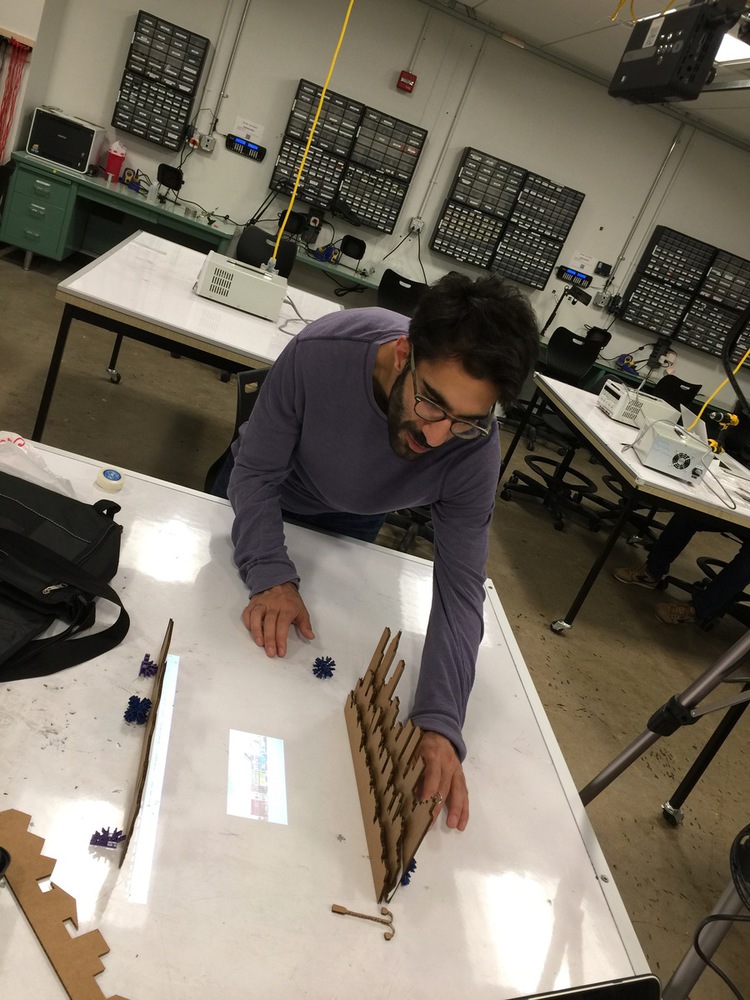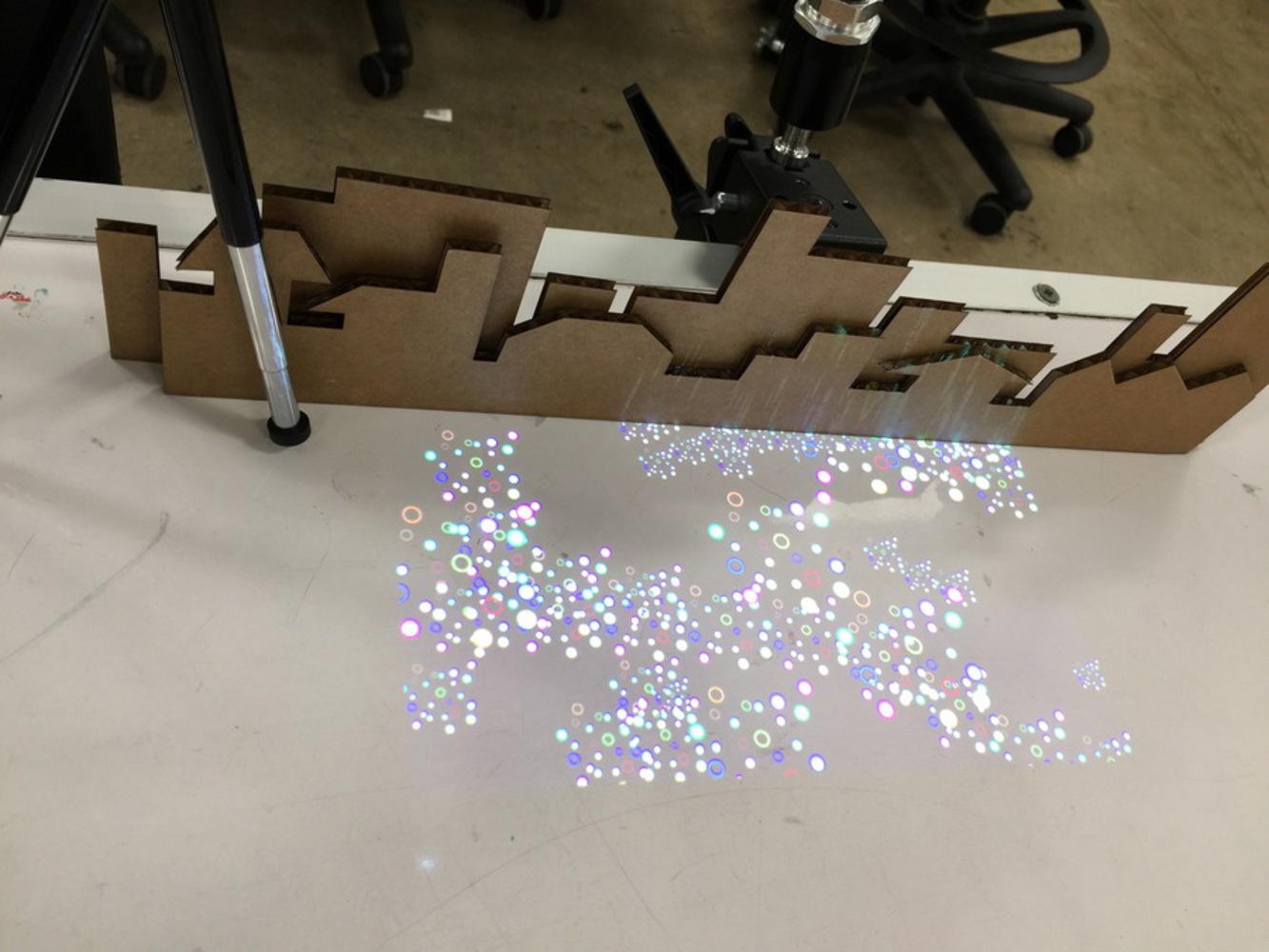Requirements: Design and build a device or experience that communicates what we can not otherwise perceive. Use sensors or rich media input (video, microphones) to gather unintelligible, unobservable, or underutilized information from your environment. Analyze that information and project it back into the world in an unobtrusive, elegant form. This output can be motion, sound, light or any media that integrates with it’s surroundings.
Outcome
A starting point for this project was Van Rosegaard’s Van Gogh Path, a street with stones that store light during the day and glow at night. We were captivated by the elegance and simplicity of Van Gogh Path. The joy of discovery is ingrained in us. But what is there to discover in a street that you cross every night? May be the answer is the hussle and bussle of daily commotion, while you are away in an office. During the day cameras capture people’s motion on the street. The motion will be translated into a light projection onto the street at night. However, this light will not recount every passerby’s journey one by one. It is the aggregate story of the whole street. So for there to be any light at night, there must have been at least two people, crossing each other’s paths. And it is exactly the story of this overlap of people’s lives that the street tells. The more prominent a color area, the more paths have crossed each other.
The original ColorWalk concept appropriates the sidewalk to collect pedestrian’s footstep data during the day. When the sun sets and the street becomes dark, lights illuminate the steps people took during the day. This would tell the story for night pedestrians of where people walked during the day connecting the two communities.
Our original idea assumed that we would track pedestrians footsteps using arrays of pressure sensors integrated into the sidewalk and present the data using LEDs also integrated into the sidewalk. However, after speaking to our instructor Jake Marsico, we were advised to avoid installations into the ground as they are generally not reliable or affordable.
Our new idea, with feasibility considered, uses computer vision and motion tracking to collect data and projectors to display the data. We would track pedestrian’s paths as the walked down the sidewalk and display patterns of light through the projectors onto the sidewalk. Costs and technological challenges are saved in this method.
We explored what was available at the IDeATe Lending Lab. Based on our instructor’s recommendations, we explored using projectors, magic arms, and web cameras. To supplement the projector and magic arm, which was not able to project from directly above the model, we decided a combination of a camera tripod and the magic arm would allow us to do so.
You can upload files of up to 20MB using this form.
